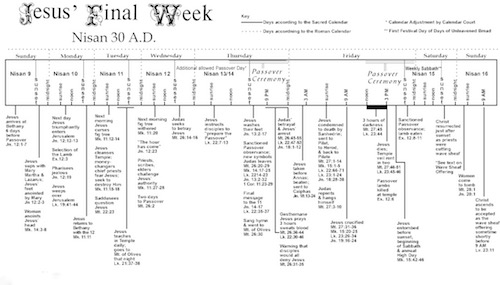
The writer of this article is a Gentile (Irish/French/English) who was an Existentialist a la Camus before she was led to the Lord by Francis Schaeffer in Hemoz, Swittzerland. My family were “Christers,” those who go to church on Christmas and Easter. I married a man who has a Catholic mother and a Jewish father. They never went to any church because neither were believers. My nonreligious husband became a Christian decades ago. From the time I became a Christian, I was always interested in the Jews and Abraham who is, also, the father of the Christian faith. (Romans 4:16). I discovered the Jews for Jesus organization several years after I believed and have supported the organization since then.
Jews for Jesus, a Messianic Jewish organization, was founded in 1973 by a Jew named Moishe Rosen who had become a Christian. He had married a Jewish woman Ceil Starr who had become a Christian and her life and words influenced his conversion to Christ as the long-awaited Messiah. CLICK HERE to read Rosen’s conversion story.
The following chronology of the last week in Jesus’ life is taken from the Jews for Jesus website. The Biblical quotes backing up the text are at the bottom of the article.
A Chronological Look at How Jesus Spent His Last Week Leading up to Passover—by Jews for Jesus, Mar 9, 2011
Saturday and Sunday
Jesus drew near to Jerusalem (1) arriving at Bethany six days before Passover (2) on Saturday. Jesus was anointed at Simon the leper’s house (3) On Sunday, a great crowd came to Bethany to see Jesus (4)
Monday
The next day (5) Jesus entered Jerusalem (6) visited the temple (7) and returned to Bethany. It was Nisan 10, when the Passover lambs were selected. Likewise, the entry into Jerusalem was the day when Jesus presented himself as Israel’s Paschal Lamb.
Tuesday
On the way from Bethany to Jerusalem, Jesus cursed the fig tree, (8) and in Jerusalem he challenged the temple practice of selling on the premises. (9) Some religious leaders began to plot ways to kill him. That evening Jesus left Jerusalem, presumably returning to Bethany. (10)
Wednesday
On the way to Jerusalem, the disciples saw the withered fig tree. (11) At the temple in Jerusalem, Jesus’ authority and wisdom was questioned by some religious leaders. (12) That afternoon Jesus went to the Mount of Olives and delivered his discourse to those assembled. (13) Two additional things occurred on that day: 1. Jesus predicted that in two days he would be crucified at the time of the Passover; (14) and 2. Judas planned the betrayal of Jesus with some religious leaders. (15)

Thursday
Jesus and his disciples prepared the Passover lamb, (16) and they had their seder meal together. (17) Jesus shared heartfelt words with his disciples and offered an intercessory prayer in their behalf. (18) They arrived at the Garden of Gethsemane, where Jesus suffered in agony awaiting what was to come. (19) Later that night Jesus was betrayed and arrested. (20) He was tried first by Annas and later by Caiaphas and other religious leaders. (21)
 Friday
Friday
Early in the morning, Jesus was tried by the Sanhedrin, Pilate, Herod Antipas, and Pilate again. (22) He was led to the cross and crucified at 9 a.m. and died at 3 p.m. and was buried later that day. (23) Jesus died at the time when the Passover lambs were being sacrificed.
Saturday
Jesus’ body was in the tomb during the Sabbath, and the Pharisees hired Roman guards to keep watch of the tomb. (24)
Sunday
Christ was resurrected from the dead. (25) His was the first of many resurrections to come, in which it was a type of first fruits offering. Start of Unleavened Bread (First fruit offerings were made on the day after the Sabbath.) (26)
1. John 11:55
2. John 12:1
3. Matthew 26:6–13; Mark 14:3–9; John 12:1–8
4. John 12:9–11
5. John 12:12
6. Matthew 21:1–9; Mark 11:1–10; Luke 19:28–40; John 12:12–19
7. Matthew 21:10–11; Mark 11:11
8. Matthew 21:18–19; Mark 11:12–14
9. Matthew 21:12–13; Mark 11:15–17; Luke 19:45–46
10. Mark 11:18–19; Luke 19:47–48
11. Matthew 21:20–22; Mark 11:20–26
12. Matthew 21:23–23:39; Mark 11:27–12:44; Luke 20:1–21:4
13. Matthew 24:1–25:46; Mark 13:1–27; Luke 21:5–36
14. Matthew 26:1–5; Mark 14:1–2; Luke 22:1–2
15. Matthew 26:14–16; Mark 14:10–11; Luke 22:3–6
16. Matthew 26:17–19; Mark 14:12–16; Luke 22:7–13
17. Matthew 26:20–30; Mark 14:17–26; Luke 22:14–30
18. Matthew 26:30–35; Mark 14:26–31; Luke 22:31–39; John 15:1–18:1
19. Matthew 26:36–46; Mark 14:32–42; Luke 22:39–46; John 18:1
20. Matthew 26:46–56; Mark 14:43–52; Luke 22:47–53; John 18:2–12
21. Matthew 26:57–75; Mark 14:53–72; Luke 22:54–65; John 18:13–27
22. Matthew 27:1–30; Mark 15:1–19; Luke 22:66–23:25; John 18:28–19:16
23. Matthew 27:31–60; Mark 15:20–46; Luke 23:26–54; John 19:16–42
24. Matthew 27:61–66; Mark 15:47; Luke 23:55–56
25. Matthew 28:1–15; Mark 16:1–13; Luke 24:1–35
26. Leviticus 23:9–14; 1 Corinthians 15:23
Article by Sandra Sweeny Silver

